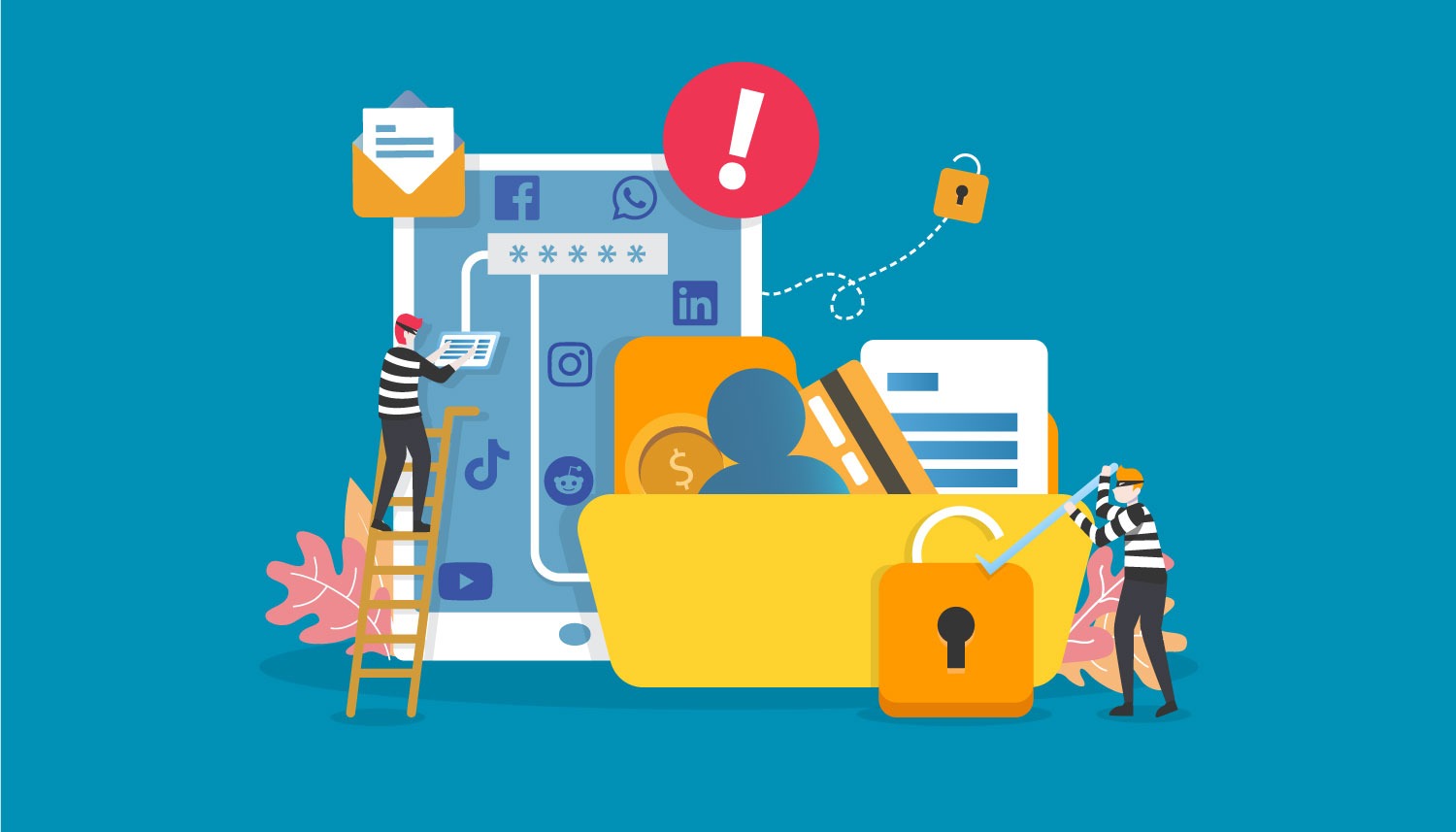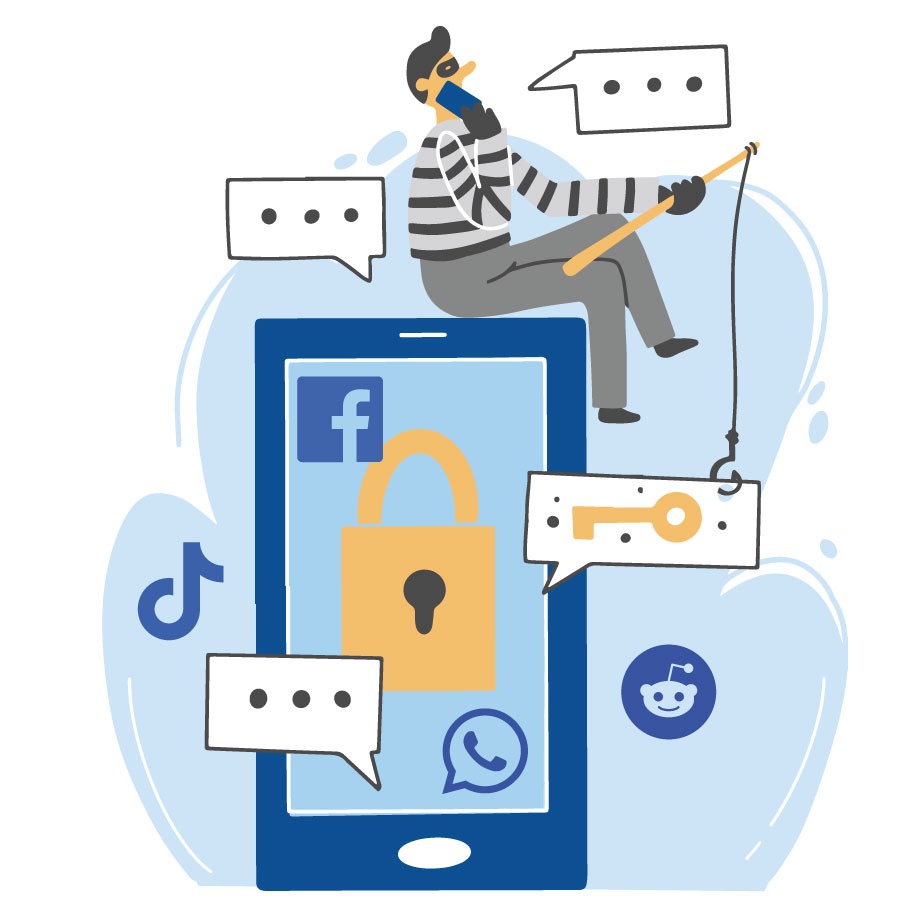Why Are There So Many Account Takeovers of Social Media Accounts?

Social media account takeovers are a serious problem, and their prevalence is only increasing. In 2022, the Identity Theft Resource Center (ITRC)1 received four times the number of inquiries about social media account takeovers compared to 2021.
There are a number of reasons why social media accounts are so frequently targeted by scammers.
- First, social media accounts contain a wealth of valuable information, such as personal contact information, financial information, plus photos and videos. Scammers can use his information for identity theft, fraud, and other criminal purposes.
- Second, social media accounts are often poorly protected. Many people use weak passwords and don’t enable two-factor authentication (2FA), which makes it easier for scammers to gain access to their accounts.
- Third, social media platforms themselves are often vulnerable to attack. Scammers can exploit vulnerabilities in these platforms to gain access to user accounts or steal personal information.
How Scammers Attack
 Scammers have a variety of ways they can take over social media accounts. Some of the most common methods include:
Scammers have a variety of ways they can take over social media accounts. Some of the most common methods include:
- Phishing: By sending emails or text messages that appear to be from legitimate companies or organizations, scammers can embed malicious links or attachments that, when clicked, can download malware or steal login credentials.2
- Social engineering: Scammers simply trick people into revealing sensitive information, such as passwords or credit card numbers. They may do this by posing as customer service representatives or other trusted individuals.3
- Brute-force attacks: Scammers may use automated tools to try millions of different passwords until they find one that works.4
- Zero-day exploits: Exploiting vulnerabilities in social media platforms that the companies are not yet aware of, scammers can gain access to user accounts or steal personal information.5
Could You Be at Risk?
Why do people fall victim to social media account takeovers? Some of the most common reasons are:
- Lack of awareness: Many people are simply not aware of the different types of scams that exist or how to identify them.
- Time pressure: Scammers often try to create a sense of urgency in their victims, making them feel like they need to act quickly without thinking.
- Fear: Scammers may threaten their victims with negative consequences, such as job loss or legal trouble, in order to pressure them into complying with their demands.
How To Protect Yourself
 But there are some steps that you can take to protect your social media accounts from takeover:
But there are some steps that you can take to protect your social media accounts from takeover:
- Use strong passwords and enable 2FA: Use unique passwords for all of your social media accounts. You should also enable 2FA whenever possible. 2FA adds an extra layer of security to your accounts by requiring you to enter a code from your phone in addition to your password when logging in.6
- Be careful about what links you click: Do not click on links in emails or text messages from unknown senders. If you are unsure whether a link is legitimate, hover over it with your mouse to see the actual URL. You can also search for the link online to see if it has been reported as malicious.
- Be careful about what information you share: Do not share personal information, such as your home address or phone number, on your social media accounts. You should also be careful about sharing photos and videos that could be used to identify you.
- Keep your software up to date: Make sure to keep your operating system, web browser, and antivirus software up to date. This will help to protect you from malware and other threats that could be used to steal your login credentials.
By following these tips, you can help to protect your social media accounts from takeover.
Sagacent Technologies Can Help
Sagacent Technologies has an easy three-step process to get you on the path toward securing your business and valuable assets. To start, contact us for a free cybersecurity assessment that shows you the gaps that can make you vulnerable.
- https://www.idtheftcenter.org
- https://www.trendmicro.com/en_za/what-is/phishing/social-media-phishing.html
- https://sagacent.com/blog/social-engineering-hacking/
- https://www.techtarget.com/searchsecurity/definition/brute-force-cracking
- https://sagacent.com/blog/zero-trust-security-model/
- https://www.microsoft.com/en-us/security/business/security-101/what-is-two-factor-authentication-2fa
